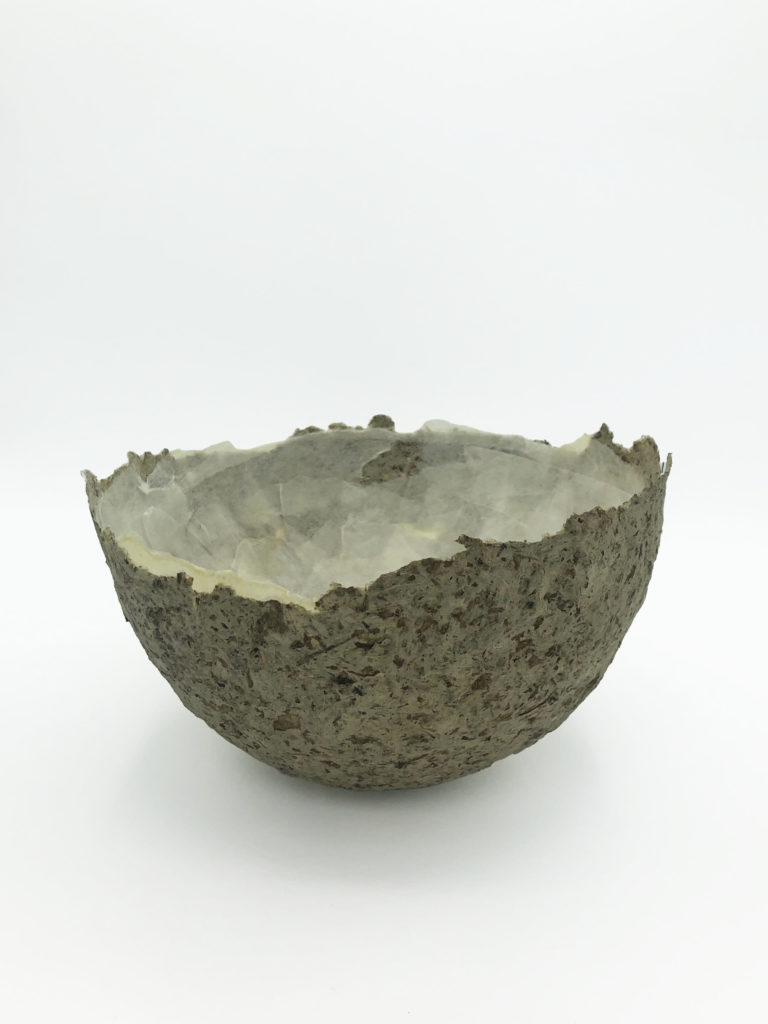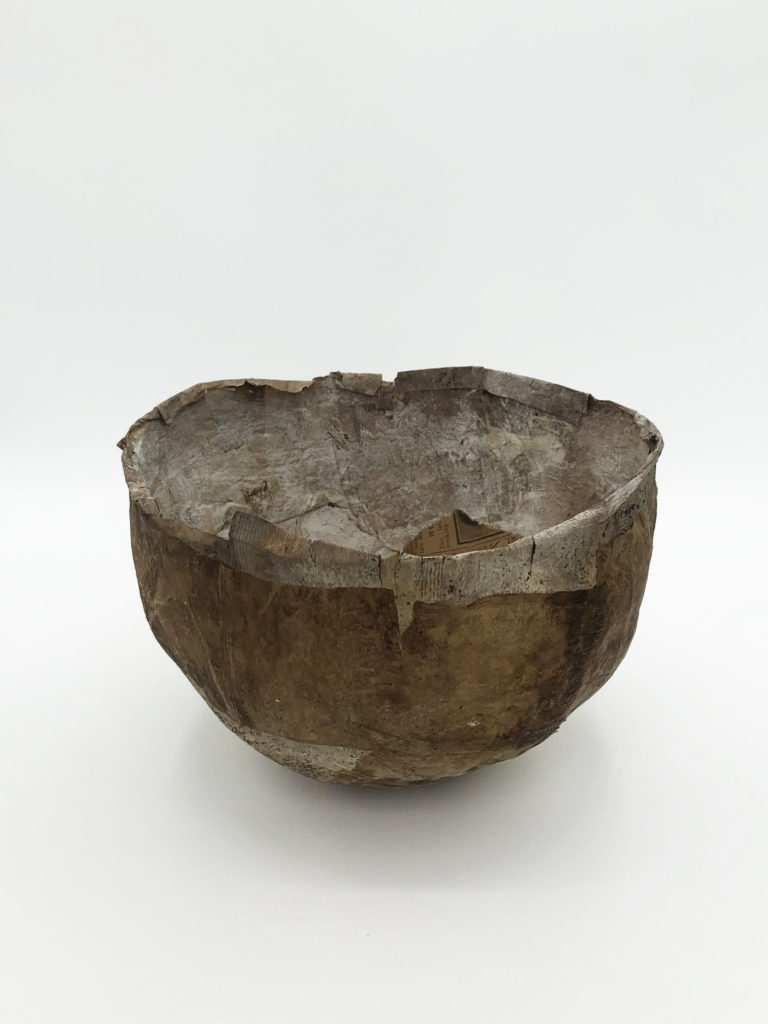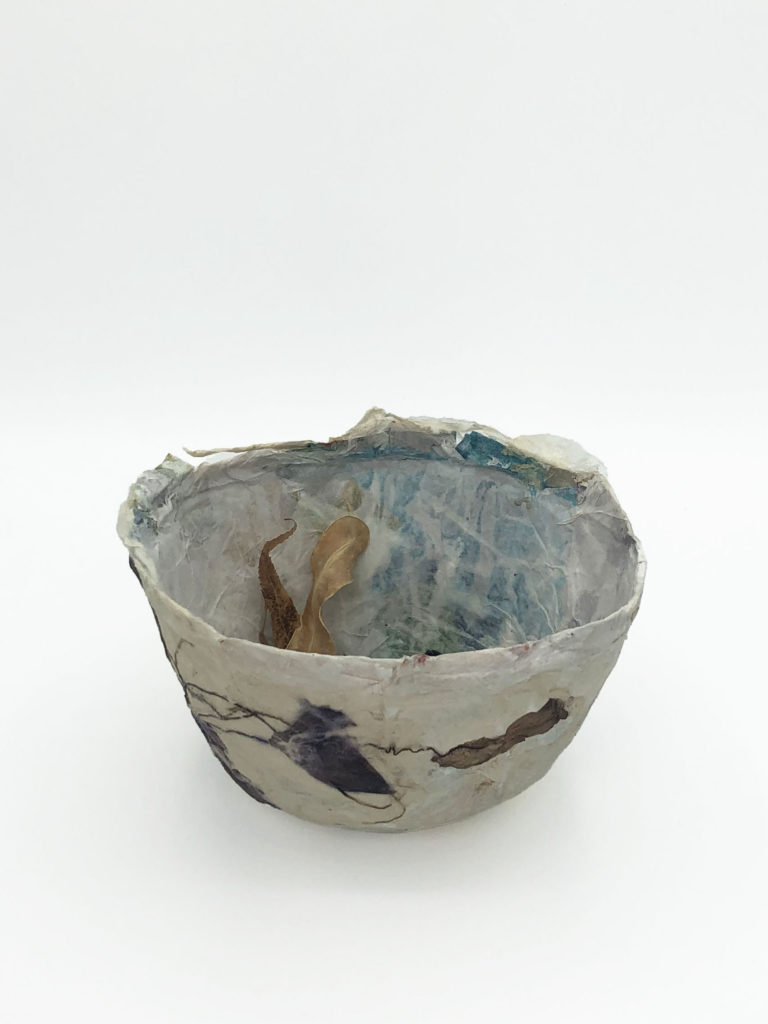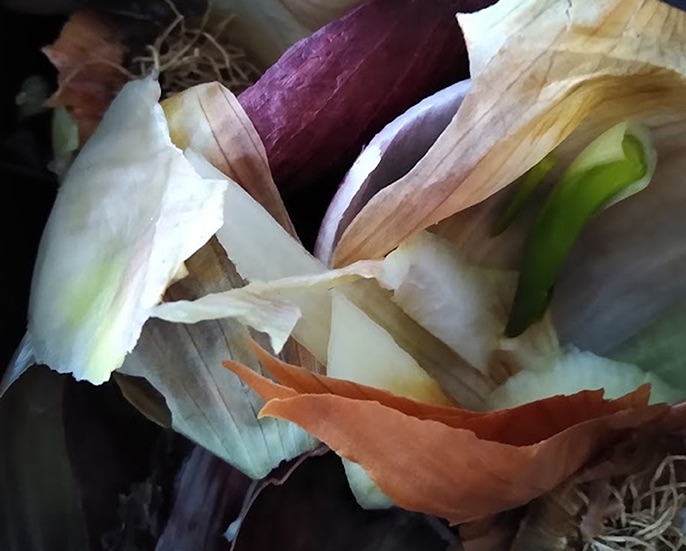March 18 – July 15 2023
Art redefining what waste means. An exhibition which brings creative approaches to the problems of resource use and resilience.
Artists: Jeremy Butler, Liz Elton, Caroline Hyde Brown, Lizzie Kimbley, Kai Lossgott, Eugene Macki, Jan Eric Visser, Rain Wu
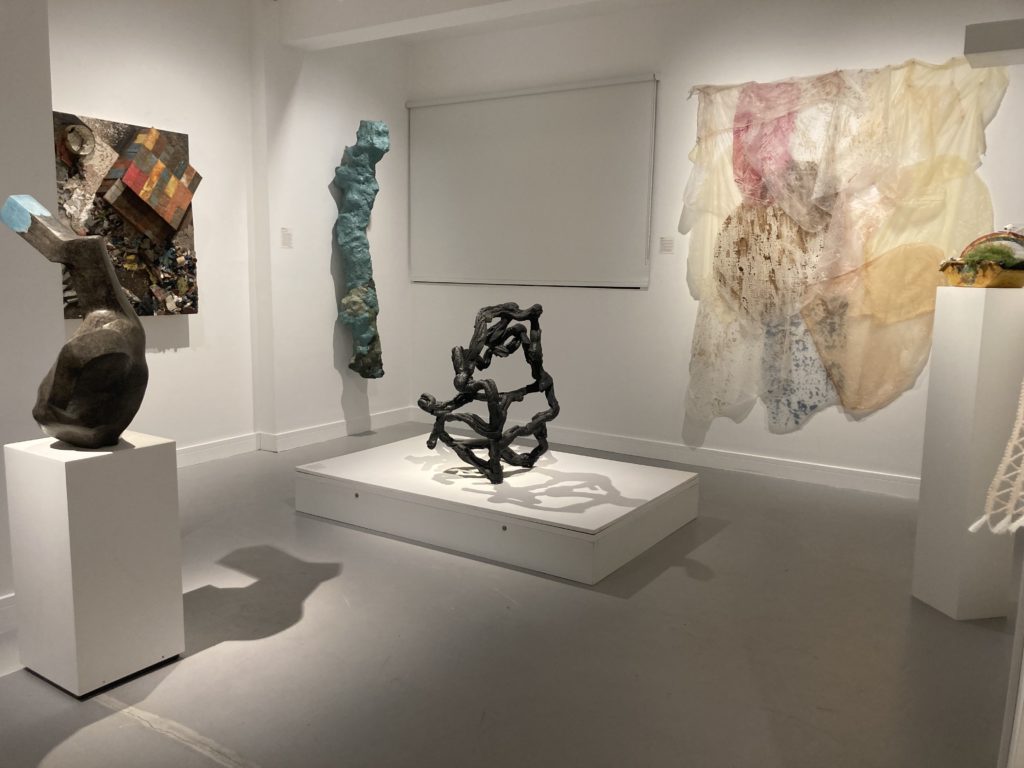
Art redefining what waste means
We are thinking about what is waste, where is waste and above all, why is there waste? By exploring these questions we hope to begin to challenge our perceptions of waste. How can we make better use of it, reduce it and ultimately avoid it.
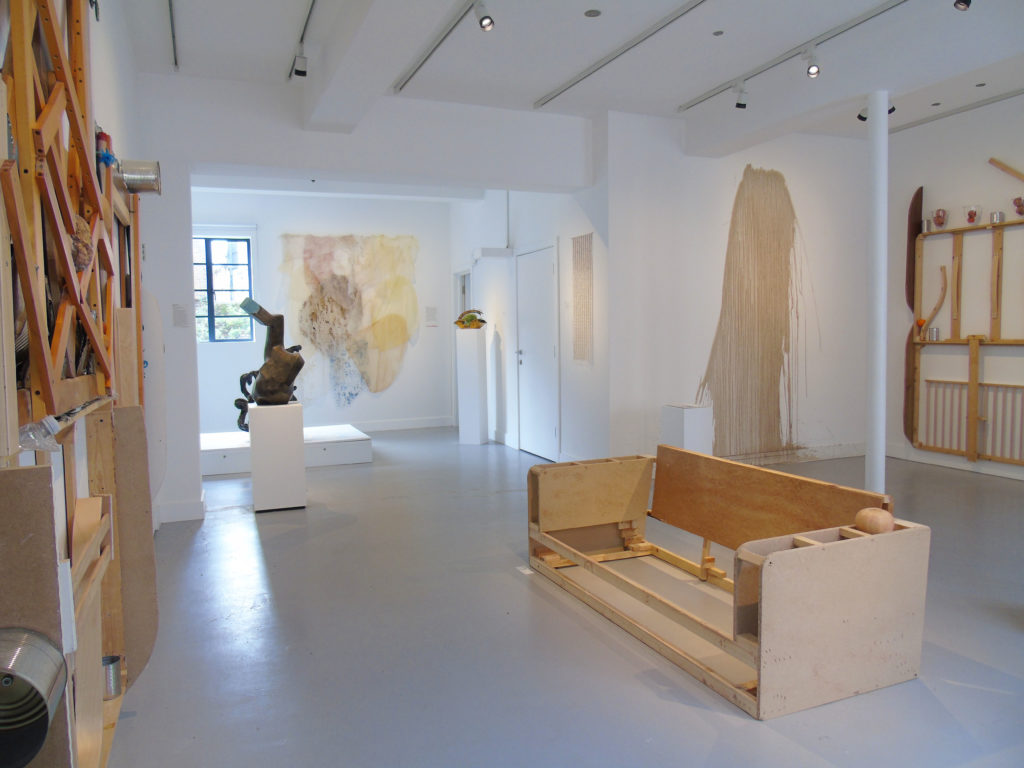
Left to its own devices, nature does not create waste, it is a human phenomenon. Caused by what? By greed, by bad planning of resource use, by speculative production of surpluses, through short-term profiteering.
Too much stuff is produced and then thrown away in useless ways, either in places where it piles up causing pollution, or where it rots. These places and processes are often hidden out of sight. For some time now, Western countries have exported waste for processing elsewhere, further East, or in the Global South. To think critically about these operations leads us to question the politics of waste.
Language of Waste
Waste is defined culturally. It means something different to the rich and the poor, and in different subject areas and materials. The way waste is defined can govern attitudes to whether or not is taken seriously as a resource. The idea of food-waste, for example, is more dismissive and negative than surplus, or left-overs and glosses over the fact that it is often the over-production which is the most wasteful aspect.
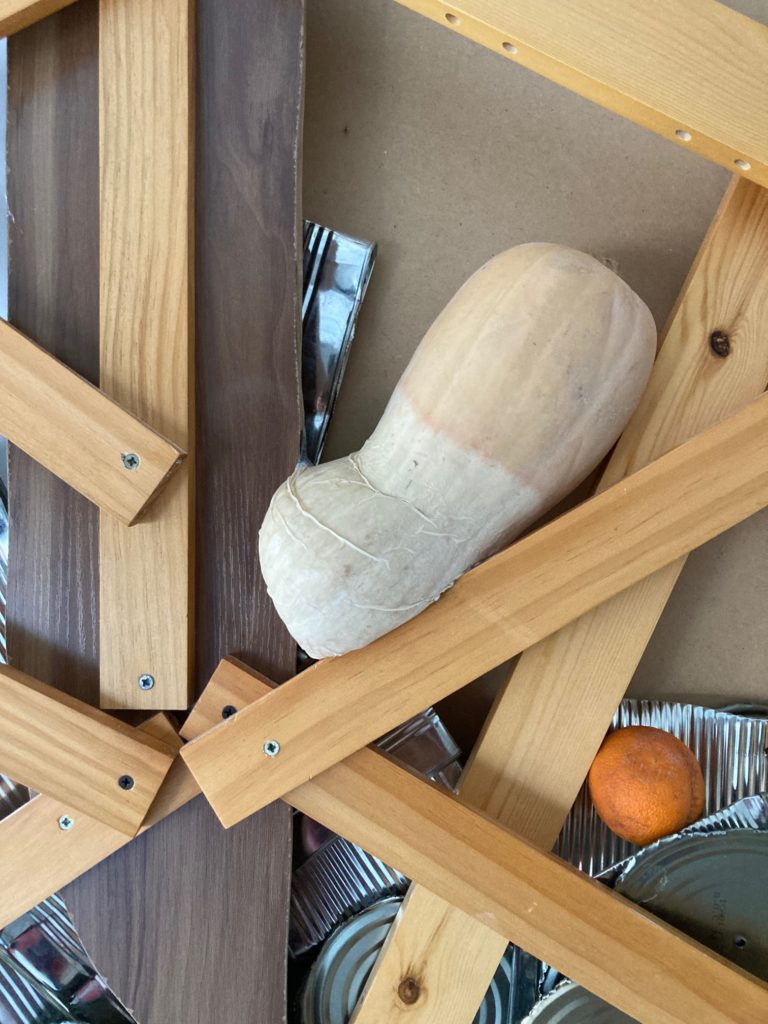
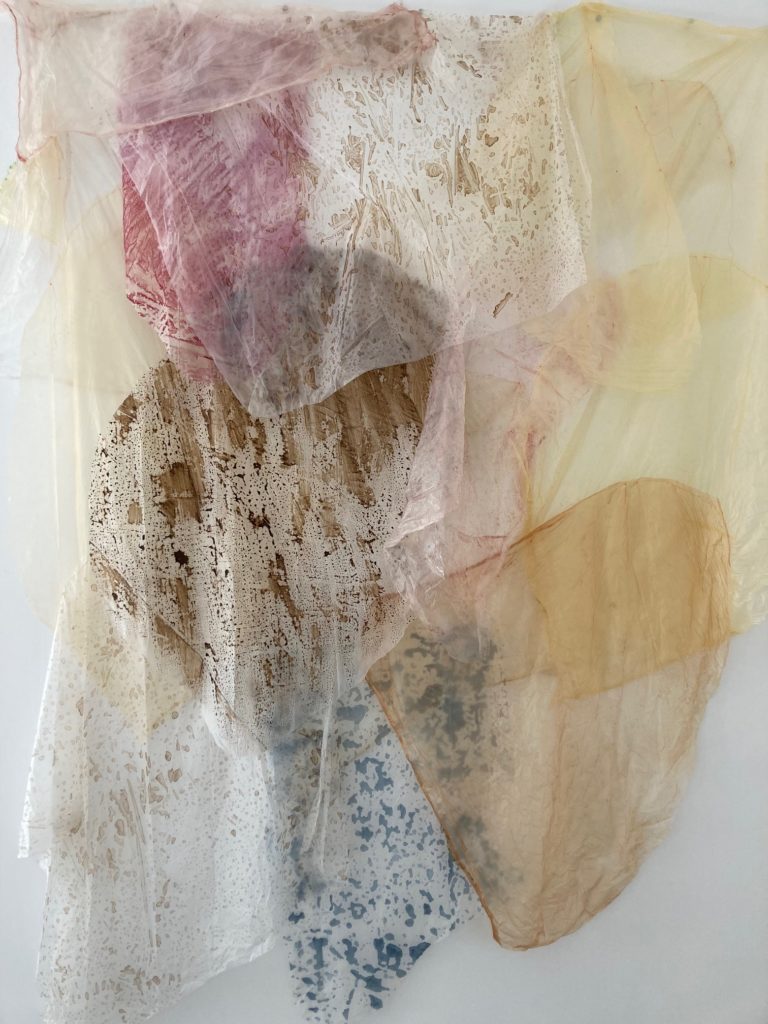
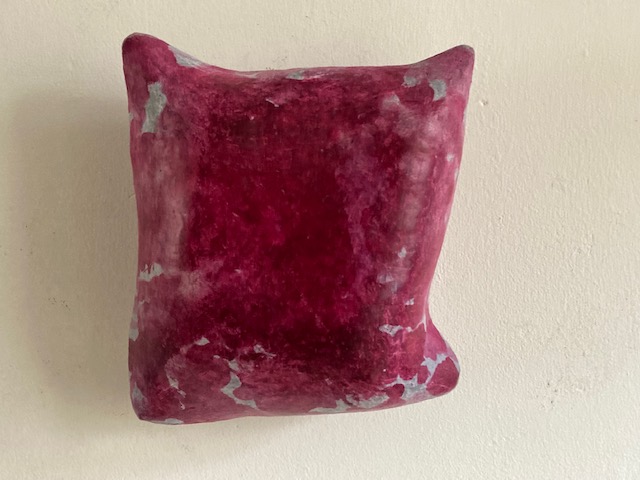
Details of works above by Eugene Macki using waste wood; Liz Elton using waste vegetables and Jan Eric Visser using waste pet food puches and computer ink
Greater environmental awareness is stimulating very gradual change. For example, more and more people and companies are interested in circular economies aiming to connect greater efficiencies in production and consumption. Re-use and repair have lost their stigma and have taken off as creative life-stye movements, for clothing and home furnishing. Gardeners have long been resourceful collectors of organic waste to fertilise and propagate crops and flowers. There are many small hopeful beginnings.
Artists in the exhibition include
Jan Eric Visser

This work is made of Jan Eric’s personal inorganic household garbage. A process parallel to his life to which he refers as ‘ Form Follows Garbage’. To create his sculptures he does not employ glues, pigments and chemicals, making use of the inherent properties of the waste materials. See artist statement on his website; http://www.janericvisser.nl/artist-statementThis
The dark colour comes from the sea clay he applied. Sea clay has been deposited on the Dutch shores from the beginning of the Holocene, 11,800 years ago. It is very fertile and has partly shaped the Netherlands. The deposition of sea clay started due to sea level rises in the past when large parts of the Dutch coast flooded. Although sea level rise decreased again about 5,000 years ago, you may still find sea clay deposits in areas of The Netherlands that are below sea level. To Visser the material references our precarious existence on planet Earth.
Jan Eric Visser and the value of waste
Artists have long recognised the value and power of waste as a resource. Dutch artist Jan Eric Visser, a pioneer in creating all his sculptures from his household waste-paper, said some years ago that ‘waste is the new gold’. He has shown a significant body of work before at GroundWork, in Trash Art, 2018.
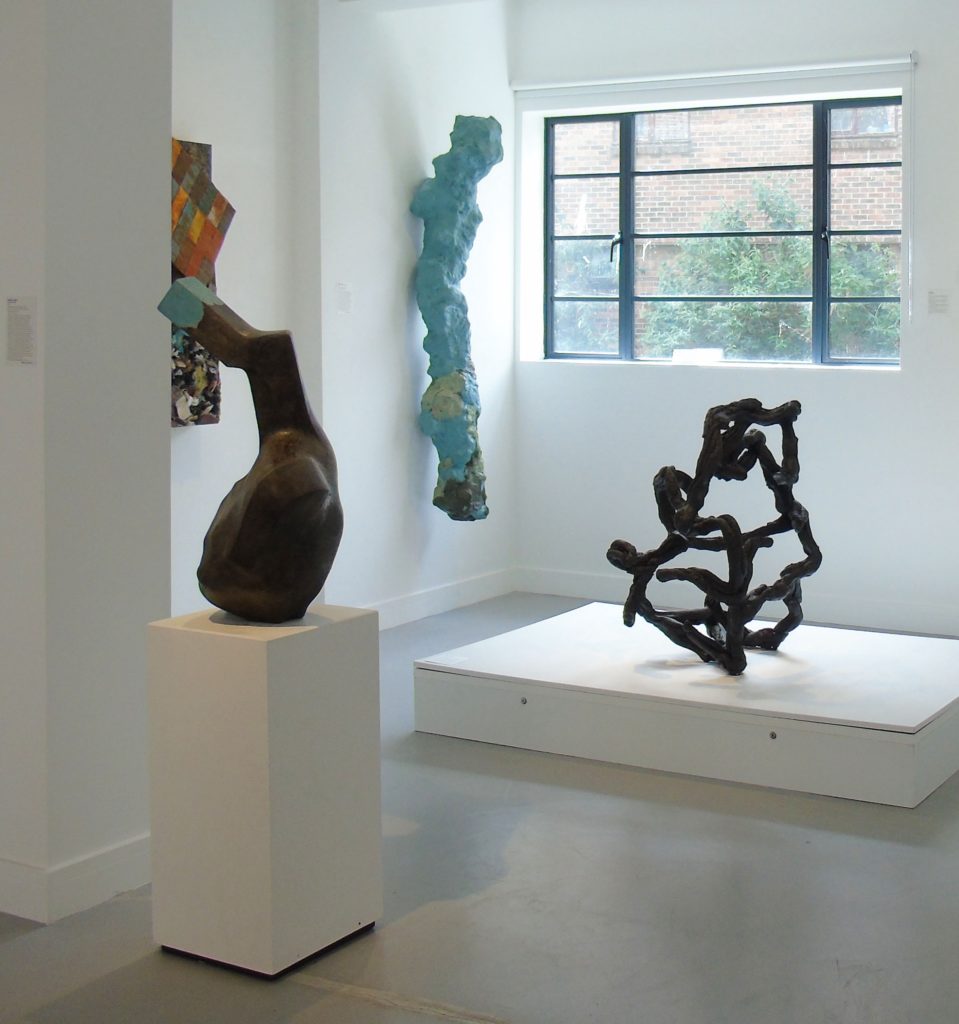
Jan Eric Visser
Untitled 2021 (Plastikos XII)
Reused silage bale plastics, inorganic household waste.
189 x 31 x 42 cm
Courtesy: l’étrangère gallery London
This wall piece is part of a series of 18 pieces (that’s why it is subtitled Plastikos XII) Jan Eric Visser made during his residency at VierVaart, which was a temporary studio of Mondriaan Fund in 2021. He worked with a locally sourced material there: silagebale plastics collected from local farmers. “The special context of VierVaart located on a former farmyard urged me to question the ecological feasibility of our food production again. Food and waste seem to be inextricably related in our society from production to consumption”. Working with the silage bale plastics Jan Eric made use of the adhesive properties of the material and how the material responds to light. Please also see column in the appendix
On the plinth:
Jan Eric Visser
Untitled 2022
Recycled post-consumer plastics
92 x 77 x 70 cm
This outdoor piece is part of a new project. Last year Jan Eric discovered a factory in the Netherlands that recycles municipal waste plastics into a material fit for street furniture. Even houses has been built of it. Jan Eric worked in co-creation with the machine in the test factory, rendering fluid lines. To Jan Eric the material advocates transformation and regeneration: thus the material can be recycled over and over again. The piece explores a sustainable future in which valuable resources are no longer incinerated as ‘ waste’ . The sculpture came about using energy generated by solar panels (on the roof of the factory
A call for a more efficient approach to waste
There are increasing economic imperatives for the more efficient approach to waste. Jan Eric believes that as the world runs out of natural resources, the reuse of waste will increasingly become both economically viable and desirable. As our current climate has shown, he is not wrong.

Liz Elton
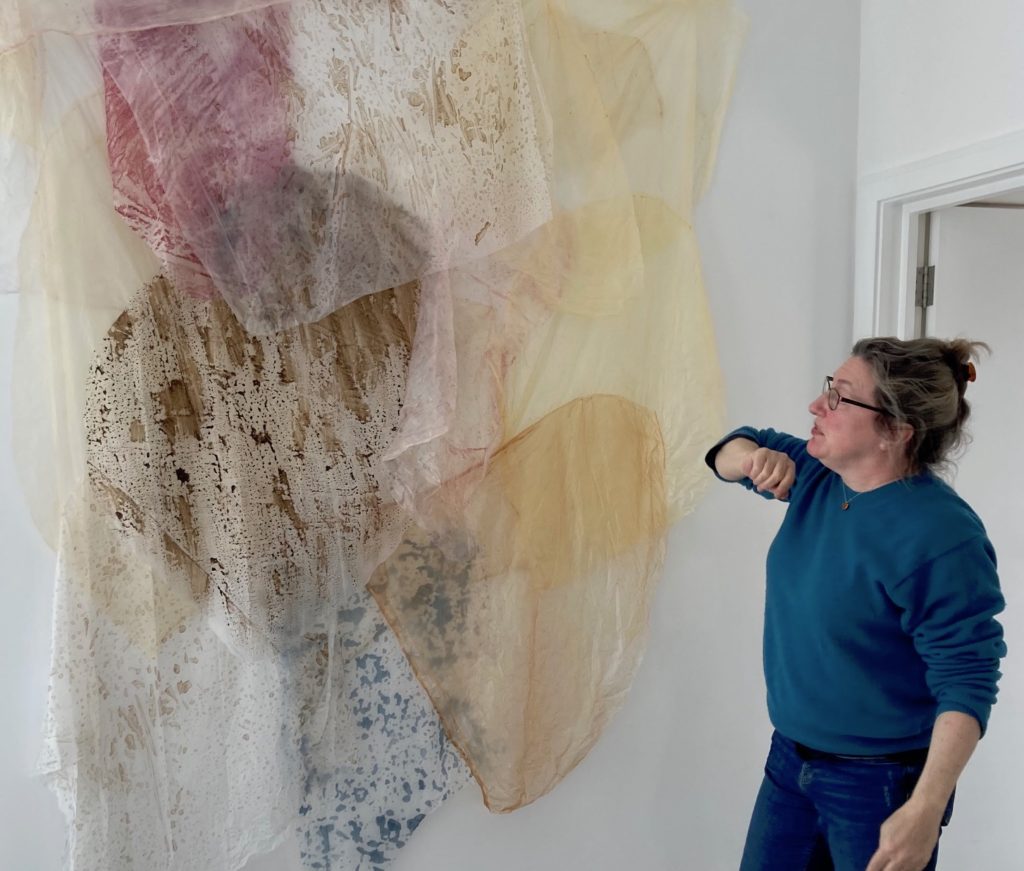
Compostable Cornstarch, Vegetable Dye from Kitchen Waste, Watercolour, Norfolk Earth, Silk
224 x 178 cm
Liz Elton considers the question how to go on?, beginning in landscape and still-life painting, expanding into 3D to explore the potential of waste and the recycling of matter. Her works embrace their own ephemerality and may address environmental issues such as the connection between soil health and food waste and shifts in ecological thinking.
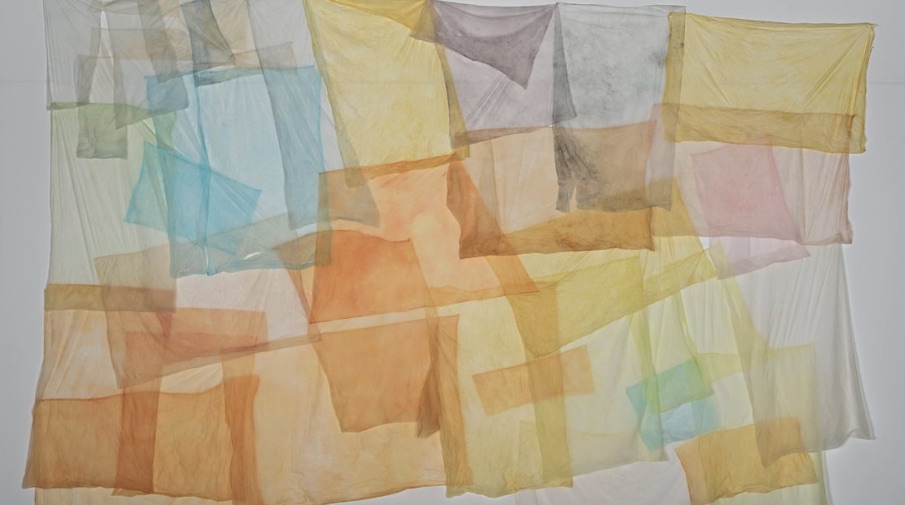
Liz Elton makes large-scale installations using compostable cornstarch as a ground (the material used for food waste recycling bags), colouring it with vegetable dyes from kitchen waste intercepted on its way to compost and embedding seeds of vegetables and medicinal plants.
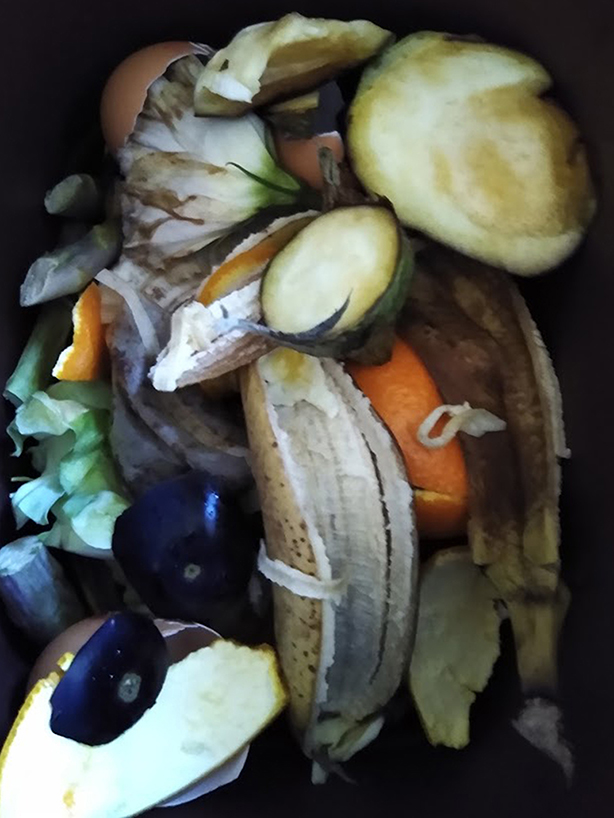
In 2020 lockdown she began a series of limited edition prints of images of her compost bin referencing historical still-life painting. Liz has a BA in Fine Art (Painting) from Wimbledon College of Art, and an MA in Fine Art from Chelsea College of Art and Design. She is the recipient of a Mark Rothko Memorial Trust Artist in Residence Award, Daugavpils, Latvia, has been shortlisted for the John Moores Painting Prize three times and her work was awarded special commendation in Dentons Art Prize 2018.
Kai Lossgott
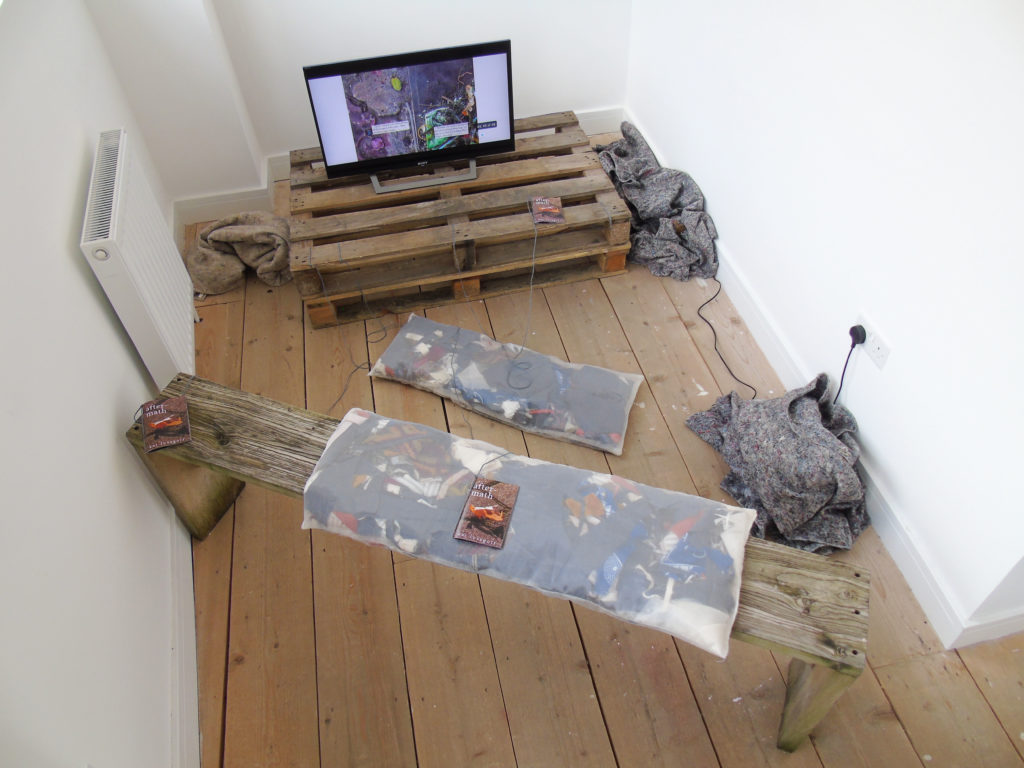
At GroundWork Gallery’s Dialogues Symposium in February 2022, Kai Lossgott showed and talked about his very moving work ‘Aftermath’, set in waste dumps around the world where there are similar distressing occurrences of rotting and wastage of once precious artefacts and materials. A writer, film-maker, visual and performance artist, through his inter-disciplinary practice he investigates questions of personal and environmental health as human agency within the socio-ecological crisis.
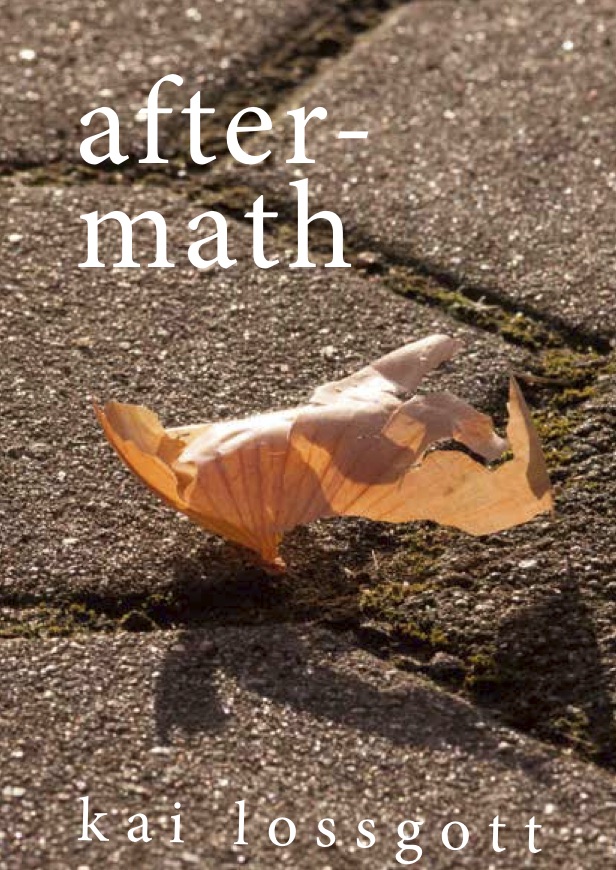
The artist has written:
Why is it so difficult for humans to change? The archeological record of the future, hidden in bins and dumps, in plain sight on streets, and its inevitable fragmentation to a scale beyond the human eye, has fascinated me for the past decade. It seems paradoxical that modern waste is designed and produced for consumers to be discarded. In my artist publication “aftermath”, I use imagination, empathy, speculative writing, and photography to explore the concept of use, uselessness, and how humans seem trapped in making and using ‘things’. The book explores the curious history and destiny of ‘raw’ physical matter and its often violent manipulation by human ambition. As a South African artist in a world recovering from colonial greed, I want to show that the world is not reducible to neat binary categories. The possible future never emerges from old approaches.
Kai Lossgott
Kai’s work often asks how we can take care of ourselves and the environment more resiliently, especially when reacting to the latest news of global disaster. He makes visible the role of trauma challenging human agency within the socio-ecological crisis.
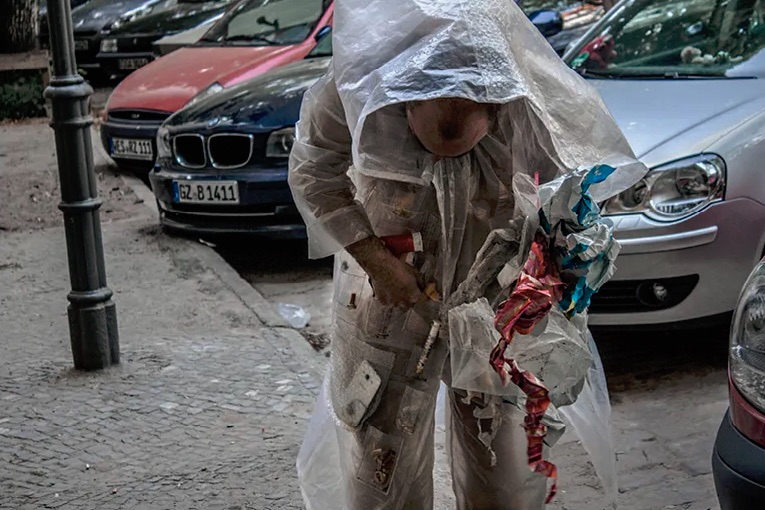
Kai Lossgott’s videos are screened on local street corners, at international museum and gallery events, as well as film festivals. The artist is also known for his public performance collaborations and curating moving image. His work has been shown at the Dak’art Biennale, Dakar; Centre Pompidou, Paris; Institute of Contemporary Art, Zagreb; Johannesburg Art Gallery and Museum Africa, Johannesburg; Arnot Art Museum, New York; Whitechapel Gallery, London.
Eugene Macki
Eugene Macki is a sculptor who creates immersive experiences which fuse content and form. He likes to work intuitively, responding to new environments and allowing ideas to form in response. He makes resourceful use of waste materials, often including food, and can be playful in making the most of multiple meanings which results.
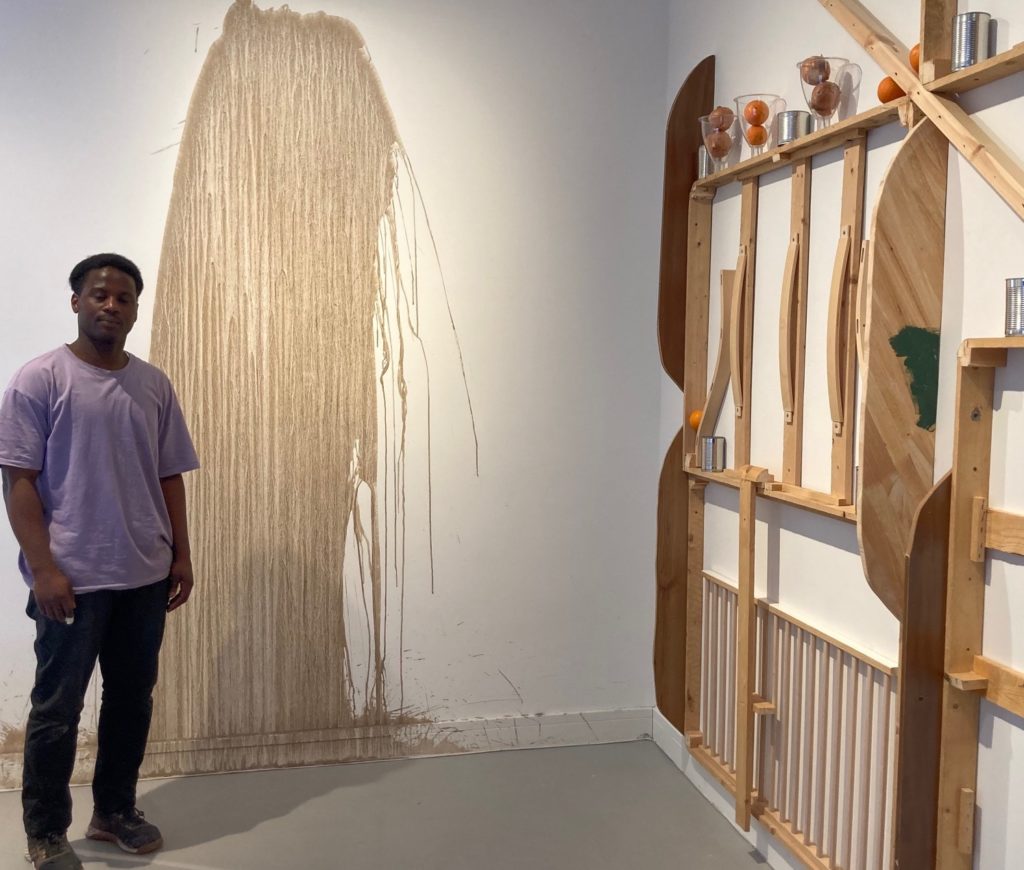
In Macki’s work an orange can be at once a circular-global form, a colour, a rotting pungent substance a means of creative repetition. It is both a food item and a shape which carries the eye around a three-dimensional experience. His work for The Art of Waste repurposes the space to evoke a living room, a bedroom, a kitchen through his use of dismantled furniture, food and utelsils. He has made an installation at once formal and abstract, poetic and atmospheric . Eugene Macki considers ‘the condition in which things happen’: his theme for a residency using potatoes at Sprouts Arts, London in 2019.
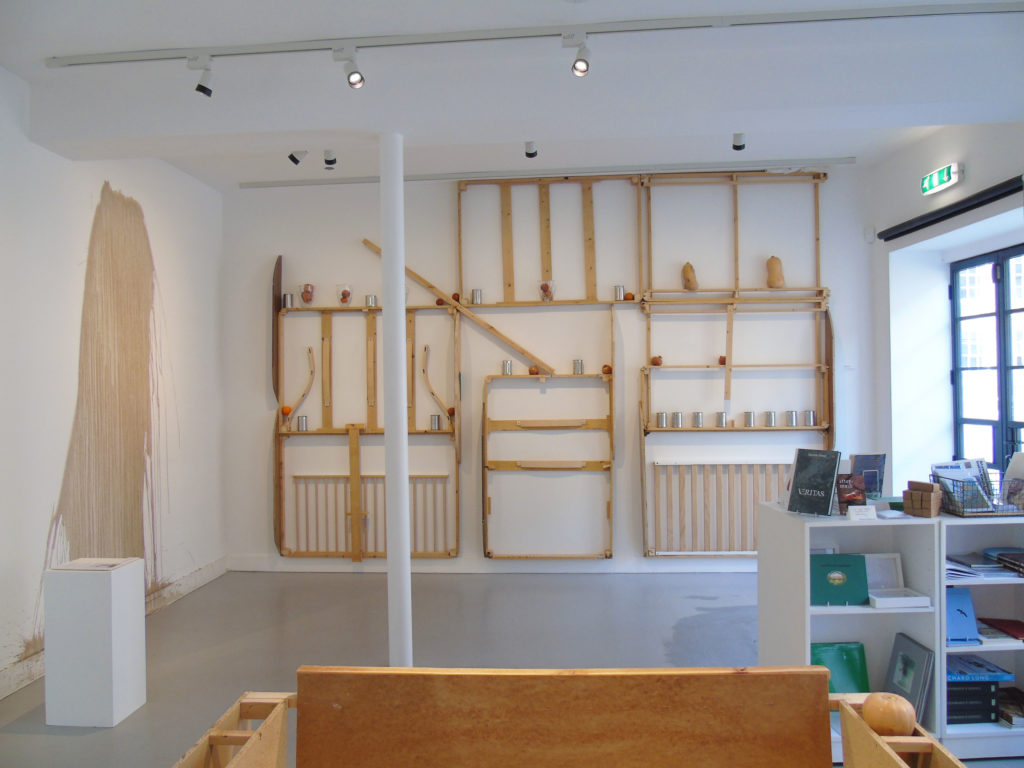
Operational Field
Site-specific installation
2023
Mixed media: wood, butternut squash, coconut, onion, metal food cans, plastic bottle, rope, screws
237 x 292 x 23 cm
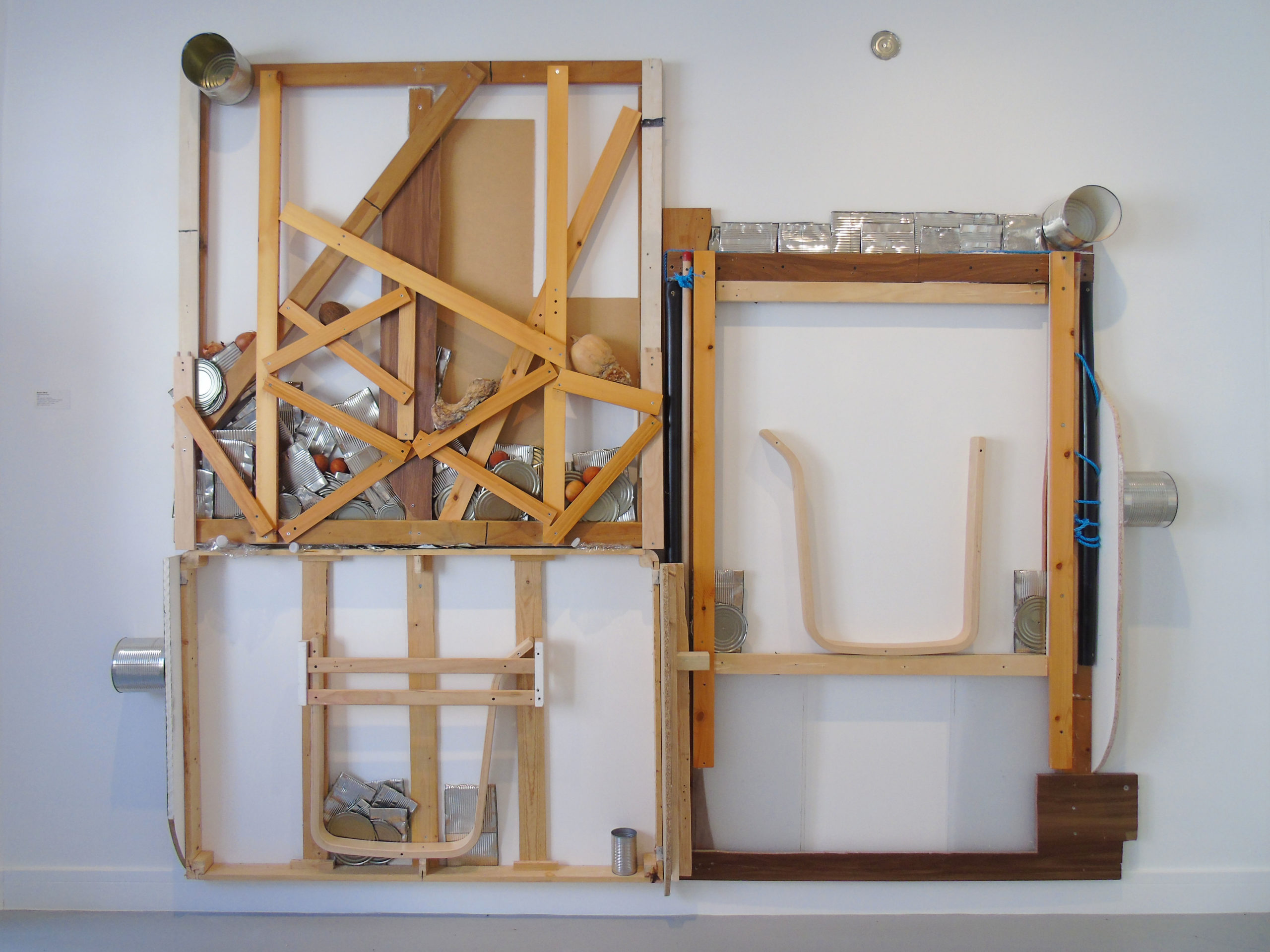
Towards Restoration
Site specific installation
2023
Mixed media: wood, butternut squash, oranges, onion, metal food cans, plastic bottle, plastic tubes, screws
283 x 413 x 16 cm
Eugene attended the Skowhegan School of Painting and Sculpture in Maine, USA, and received an MA from Chelsea College of Arts in London. He gained a BA from Sheffield Hallam University in the UK. Eugene lives in London and is often travelling to take part in many residency projects around the world.
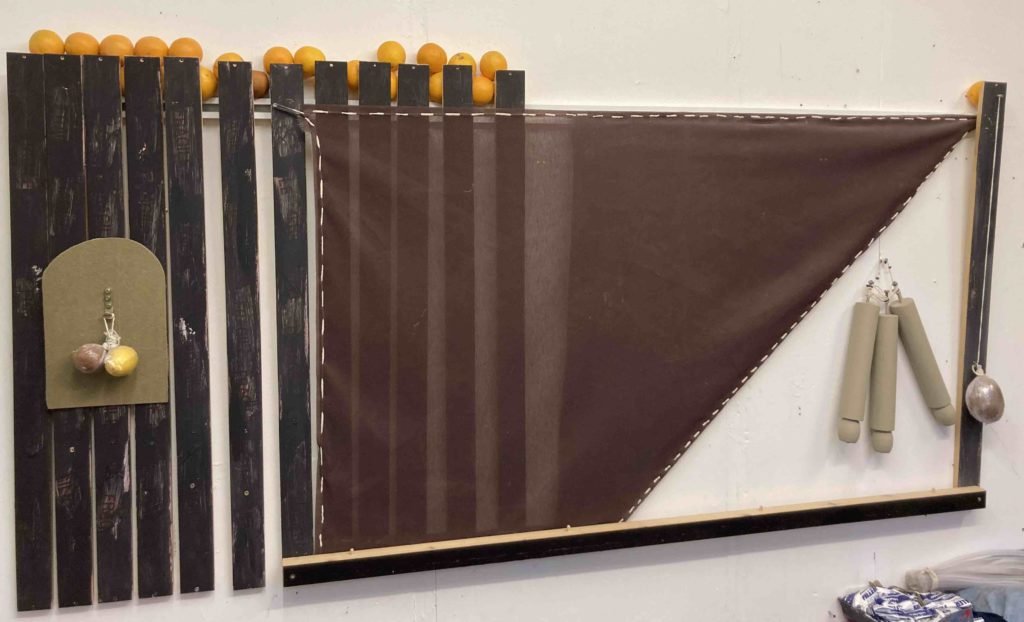
Rain Wu
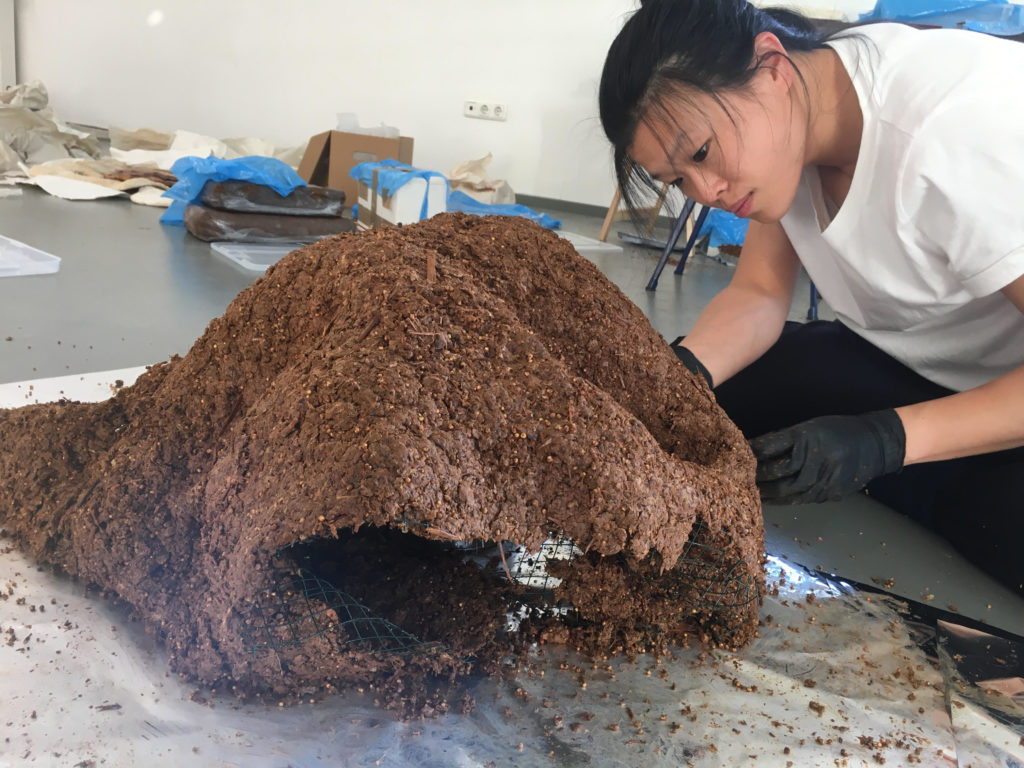
Rain Wu is a Taiwanese artist and architect based in London. Her work is conceptually driven and materialises in different forms and scales from drawing, sculpture, food performance to architectural installation. She works with perishable materials to instigate discussions around our manifold relationships with nature.
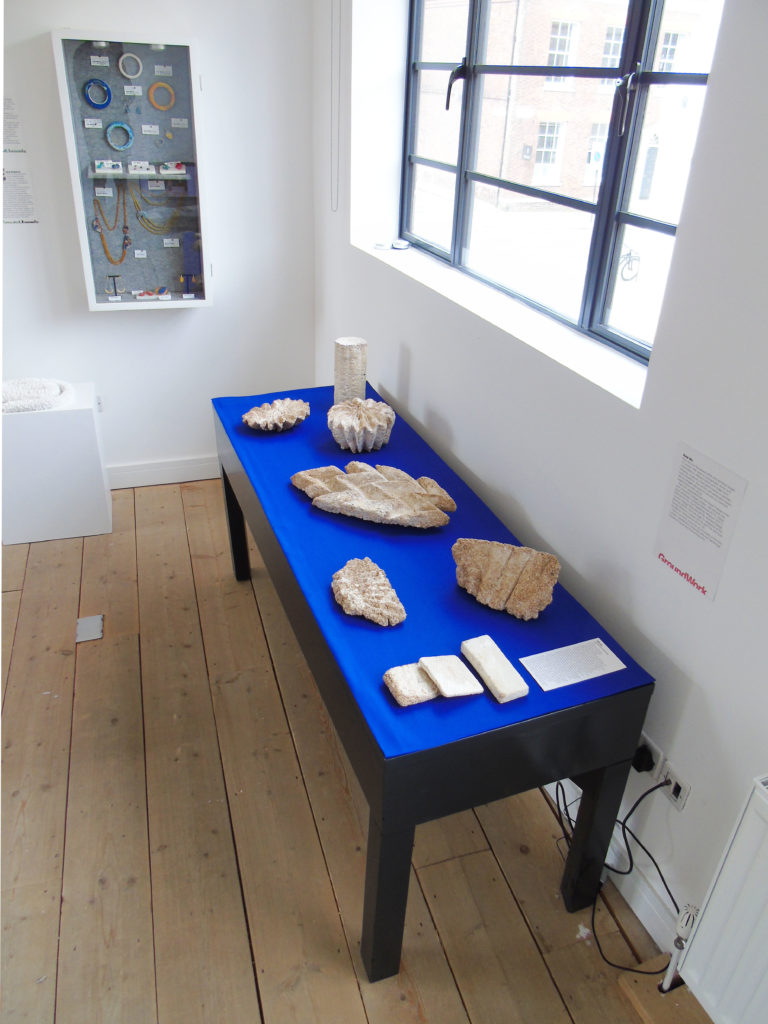
Rain Wu
Simultaneous melodies
Sculptural installation
2023
Mycelium, hemp stalk
Dimensions variable
Simultaneous Melodies
The project Simultaneous Melodies, is a development from the artist’s works on edible materials in sculpture and ceremonial performance. The work draws inspiration from the interspecies, symbiotic system of nutrients-sharing that takes place underground before mushrooms come to light.
The artist says:
“ The mycelium material I am using is mostly agricultural waste- straw and hemp stalks chopped up to form the bulk/ substrate of the work. Mycelium acts as a biological binder (‘weaving glue’) to bind all the loose bits together.
Besides the literal use of waste as material for the artwork, the work also engages conceptually with the fungi kingdom as the decompositor in the natural world, without them, the world would be clogged up with waste! Only because of fungi decomposing that there is room and nutrients for other life forms. “
Simultaneous Melodies explores the formal and material beauty of mycelium (the vegetative part of a fungus) by casting a series of sculptures in textile moulds. Unlike materials like plaster or steel, mycelium doesn’t freeze in one shape, but it persists in a state of sustained instability. As it decomposes, mycelium feeds on the substratum out of which mushrooms can fruit, thus collapsing together the opposite processes of dying and living, of fading and growing.
Rain Wu graduated from Royal College of Art and University College London. Her artwork has been exhibited in Sharjah Biennial (2017), Taipei Biennial (2016), The Palestinian Museum (2017), London Design Biennale (2016), Istanbul Design Biennial (2020); she was in residence at the Design Museum London (2016) and The Van Eyck (2018-9).She is currently a lecturer at University of the Arts London, Goldsmiths University and CSVPA Cambridge.
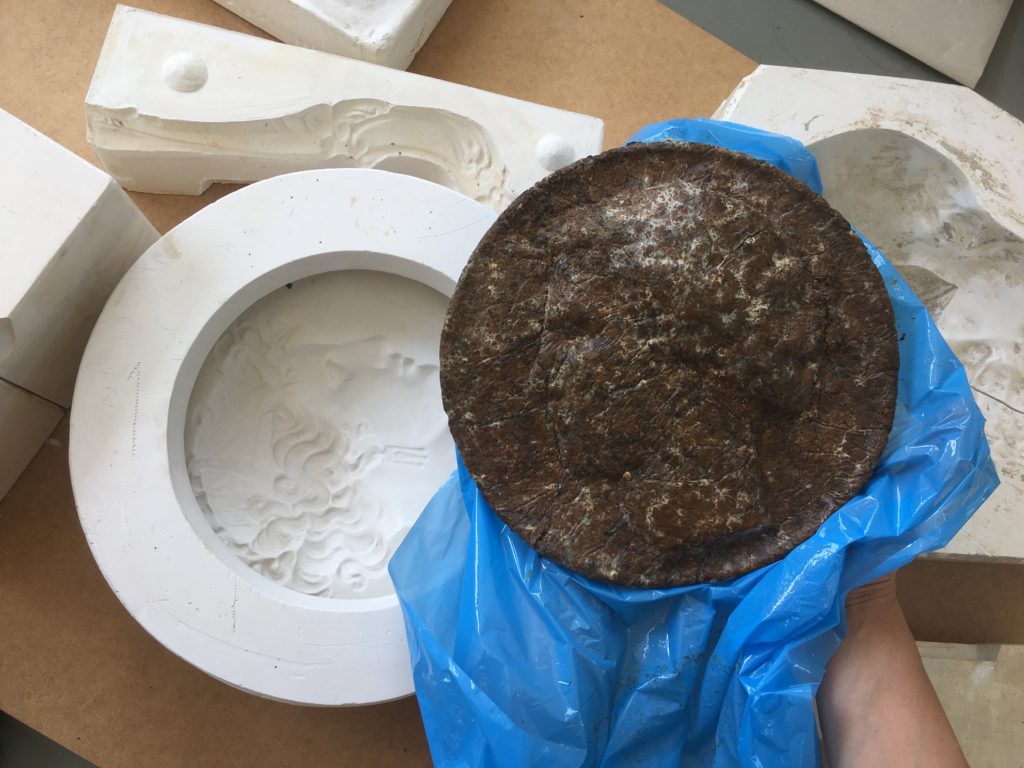
Jeremy Butler
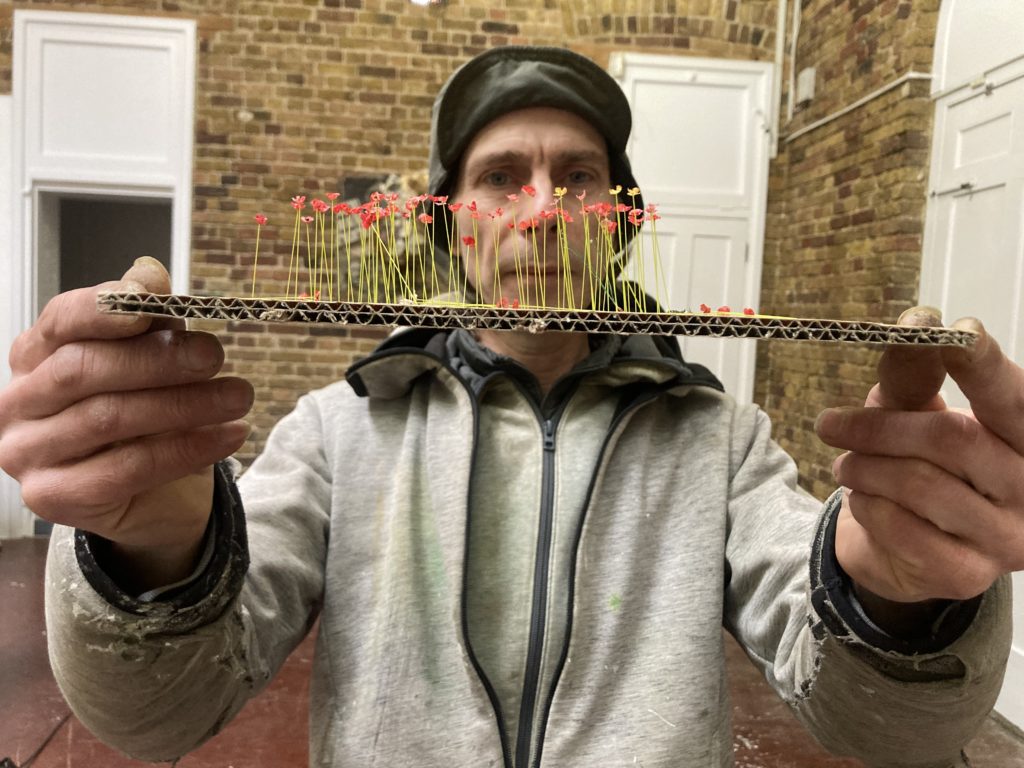
Jeremy Butler has made a series of minutely detailed relief-assemblages within which are concentrated a mass of saved tiny trash. While that describes their physical being, they actually appear to encapsulate little re-organised worlds.
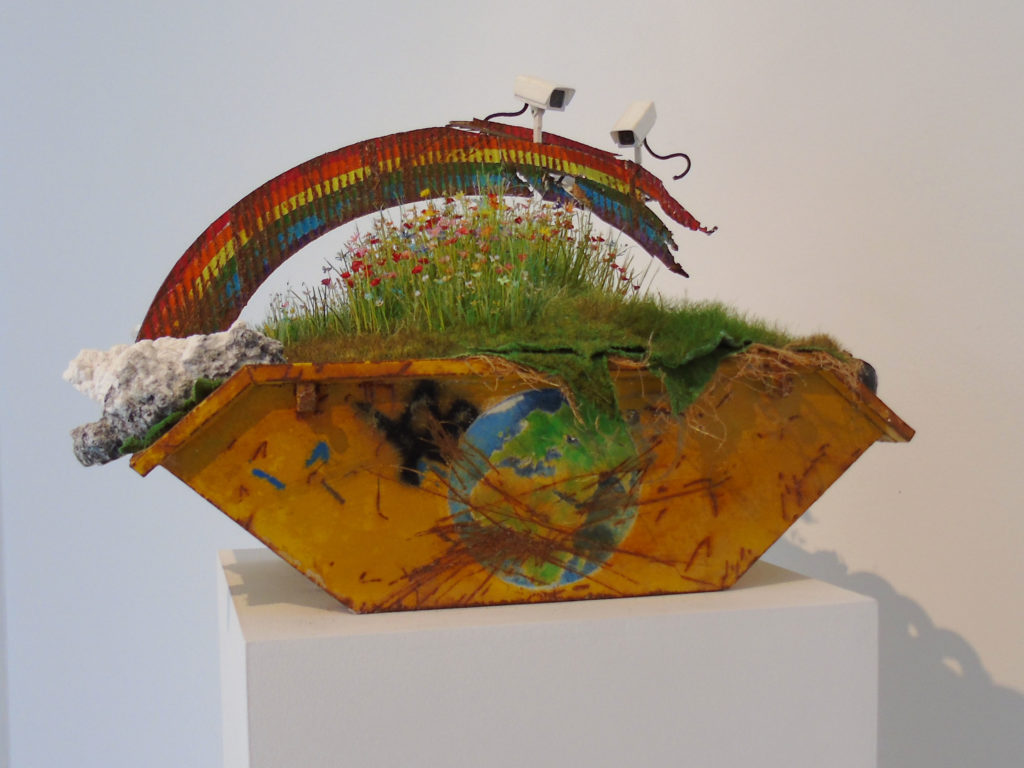
Jeremy Butler’s works hover between order and disorder. They reference somewhere between earth and space. At face value they are collections of all kinds of grid-like, jagged, geometric and irregular shaped items. Some, the artist has carefully organised; others are crammed together. The entire environment manages to be both complex , formal and multi-referenced. Undiscovered Country is a vision of organised chaos, as well as a carefully stratified contemporary material overview. It is both decaying and reconstructive.

As Krszysztof Fijalkowski wrote in the journal Mass:
‘Above all, Butler’s work miniaturizes a realm of collapsed technology and globalization, as though to catch a seething moment of late capitalism in amber. A tangible sense of ruin and anxiety reigns over these anonymous yet strangely specific zones…’
Jeremy Butler’s work was exhibited at Edgelands at Camden Art Centre, London in 2015. He has work in the collection of the Groucho Club, London.
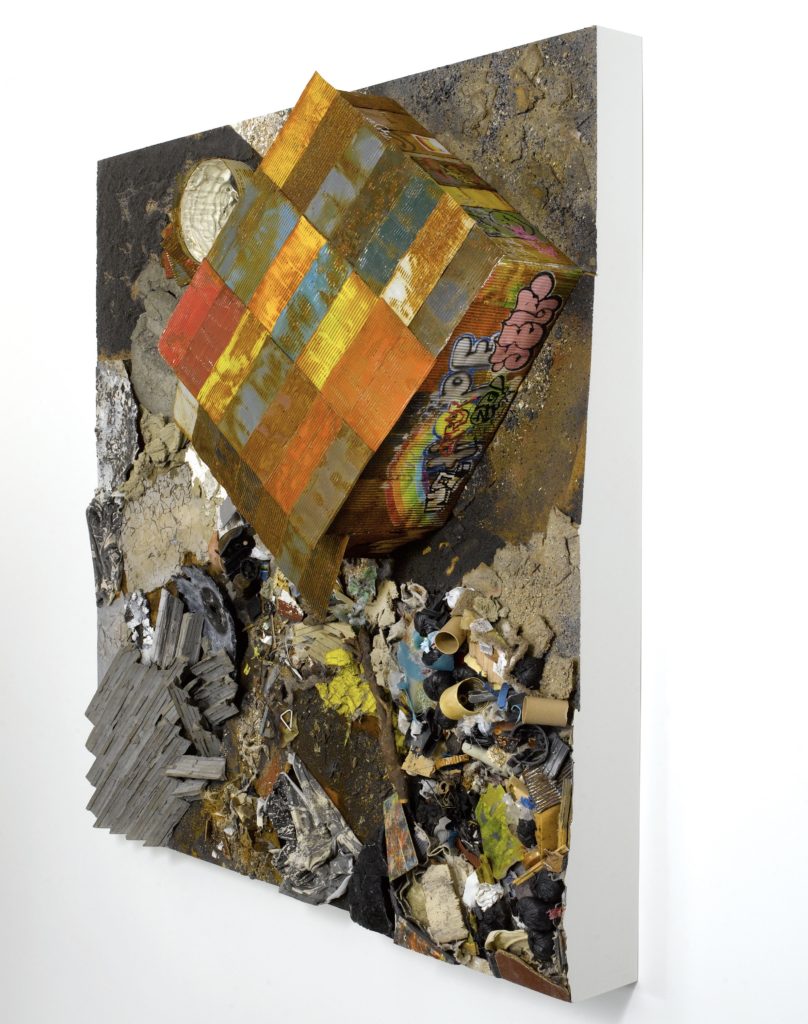
Lizzie Kimbley
A focus on sustainable practice is central to Lizzie Kimbley’s work and creative process. Conscious of the volume of waste sent to landfill in our linear, ‘take-make-waste’, system Lizzie employs the principles of circular design, which means that she considers material in regard to its whole life cycle. Working with a variety of natural materials such as linen, paper and hemp, she challenges notions of waste, ensuring everything is biodegradable and no waste is left behind.
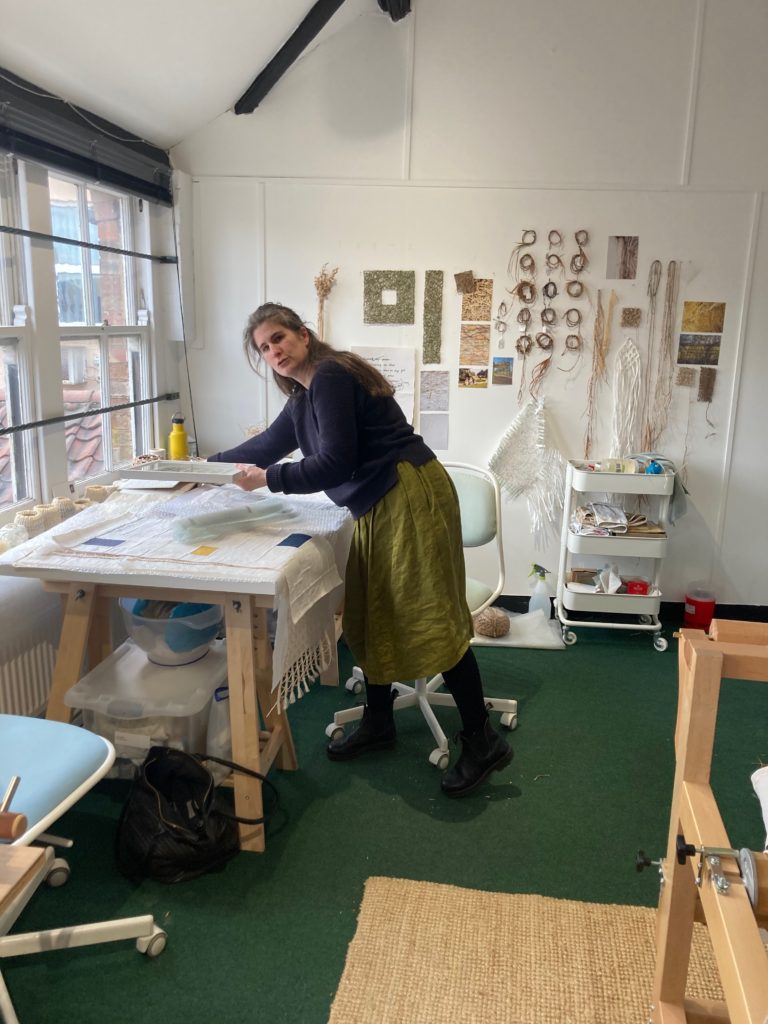
Lizzie Kimbley is a textile artist and designer based in Norwich. She works with woven textiles, natural dyes and basketry techniques to create contemporary artworks exploring responsible design and connection to place and nature.
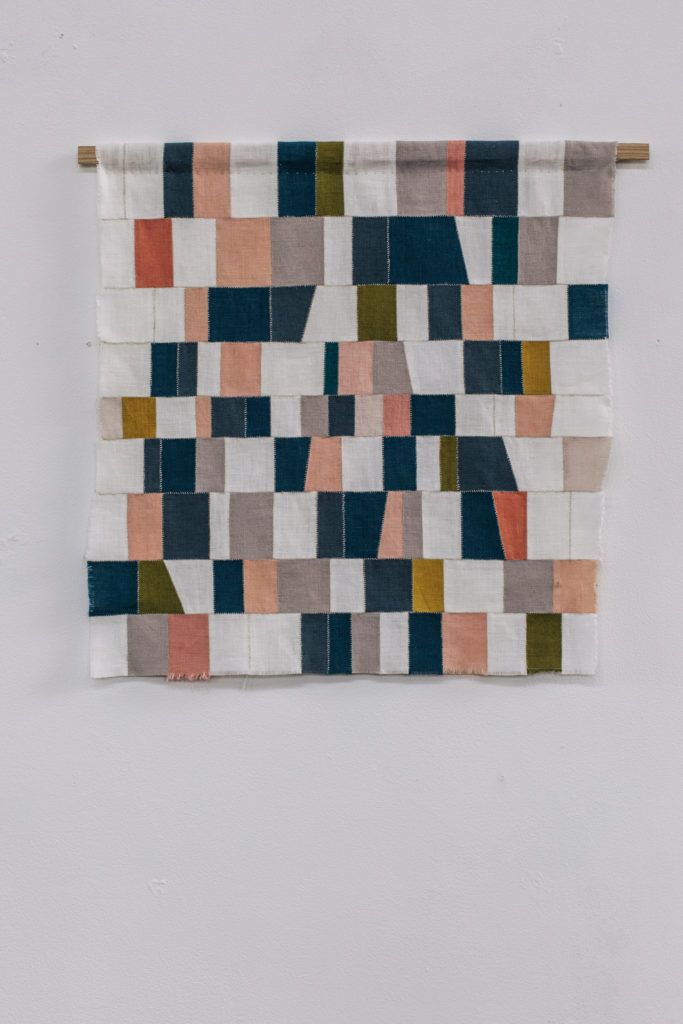
‘No Away’, H 50.5cm x W 49cm, Linen offcuts, linen thread, madder, walnut, meadowsweet, 2021.
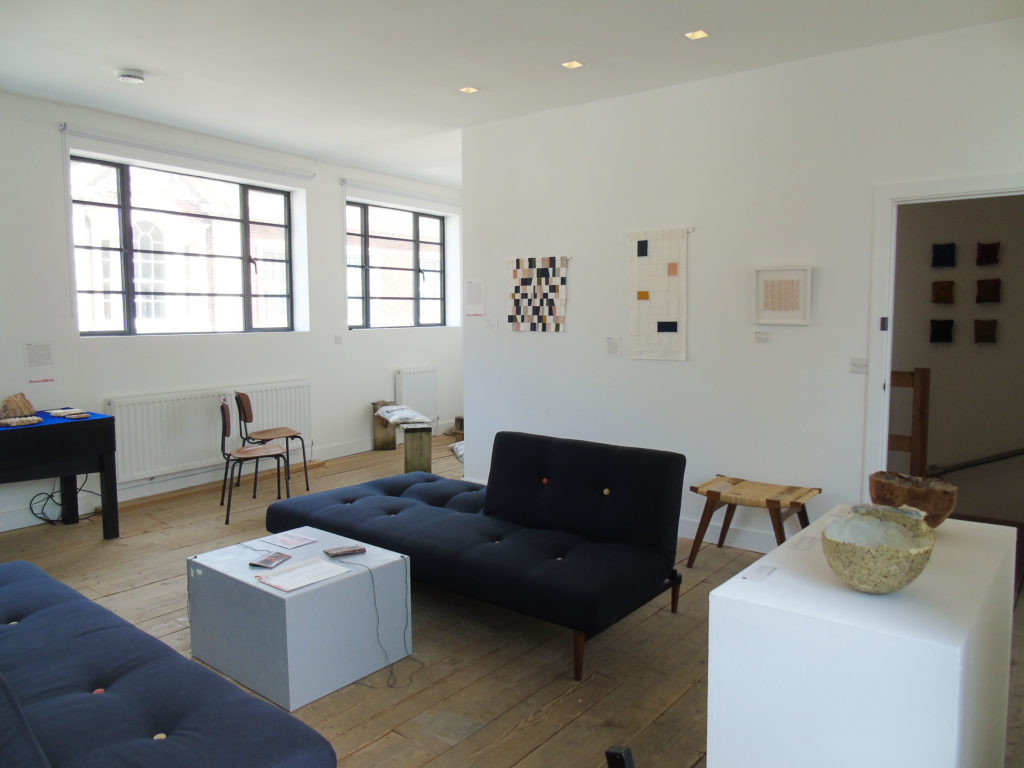
View of exhibition display; Caroline Hyde-Brown’s works in foreground and Lizzie Kimbley’s on the wall
Caroline Hyde Brown
Caroline Hyde Brown is an artist and researcher, studying for a Masters Degree at Norwich University of the Arts. She is exploring the environment through a practice of slow reflection and experimental artistic engagement. She is currently part of a collaborative group creating surfaces that are bio-based. Working at the National Institute of Agricultural Botany, Cambridge, and John Innes Research Centre, Norwich, they are looking at recreating textiles from Neolithic legumes, such as grass pea and more recently green manure crops such as Buckwheat and lentils.
Caroline likes to encourage the viewer to cultivate the resource of time. She sees her work as a call to action. A call to rethink time, to demand an approach that priorities simplicity, co-creation, and collaboration.
